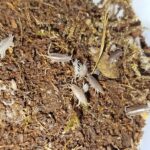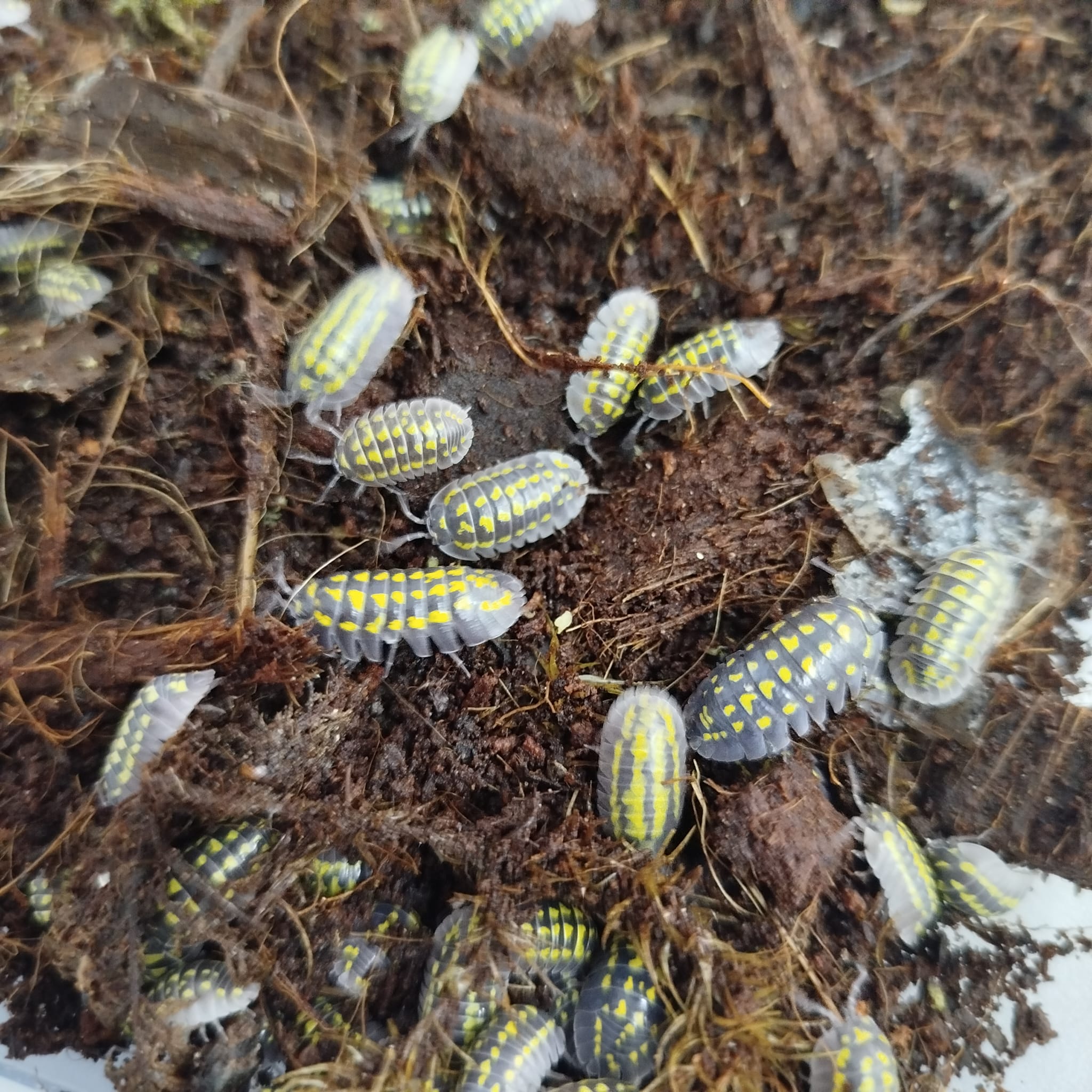

Armadillidium Gestroi
2,00€ – 15,00€Price range: 2,00€ through 15,00€
Discover the fascinating Armadillidium gestroi! 🌟 With its beautiful grey colour and striking yellow spots, this isopod is not only an eye-catcher, but also an excellent ally in your terrarium. It contributes to a healthy and vibrant ecosystem, add it today!
Technical Data Sheet: Armadillidium gestroi
Common Name: Armadillidium gestroi Isopod
Scientific Name: Armadillidium gestroi
Family: Armadillidiidae
Description:
The Armadillidium gestroi is a terrestrial isopod species known for its ability to roll into a perfect ball when threatened, a characteristic typical of armadillidiids. Its coloration varies between shades of grey and brown, and it features yellow spots along its body, usually set against a darker background. These spots are typically distributed along the edges of its segments, giving it a distinctive and attractive appearance. The body is robust and segmented, with hard plates providing protection.
Size:
- Adults: between 10 and 15 mm in length.
Geographical Distribution:
This species is native to Europe, particularly common in Mediterranean regions, although it can also be found in other habitats with suitable moisture conditions.
Natural Habitat:
Armadillidium gestroi prefers humid and shaded environments, such as forest floors, under stones, decaying leaves, or logs. It also adapts well to terrariums, paludariums, and vivariums, where it plays an important role in cleaning and decomposing organic material.
Terrarium Care:
- Humidity: High, ideally between 60% and 80%. Light misting of the substrate is recommended to maintain a moist environment without waterlogging.
- Temperature: Prefers temperate conditions, between 18°C and 24°C (64°F – 75°F).
- Substrate: A substrate mix of soil, coconut fiber, and dried leaves is ideal, as it mimics their natural environment.
- Diet: Detritivorous, feeding mainly on decaying plant matter. In captivity, dried leaves, wood pieces, and supplemental foods like vegetables (zucchini, carrots) and small amounts of fruit can be provided.
Reproduction:
The Armadillidium gestroi is oviparous, and the female carries the eggs in a brood pouch under her abdomen until the young are ready to hatch. The offspring go through several molts before reaching maturity.
Use in Terrariums:
This isopod is excellent for bioactive terrariums, as it helps with cleaning and maintaining the micro-ecosystem. It assists in breaking down plant debris and waste, promoting a healthy environment for other terrarium inhabitants.
| Options |
1 unit ,10 units |
|---|
Related products
Creobroter gemmatus
Sold out
Caribena versicolor
Sold out
Cubaris jupiter
there is stock
Merulanella Scarlett
Sold out
Peruphasma schultei
Sold out
Blaptica Dubia
there is stock
Achrioptera manga (fallax)
Sold out
Armadillidium klugii
Sold out
























